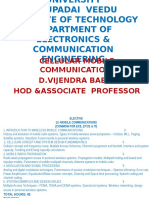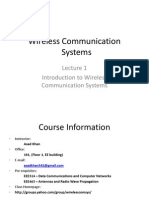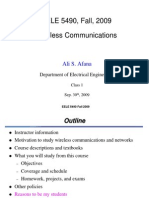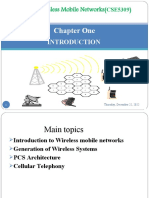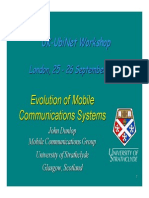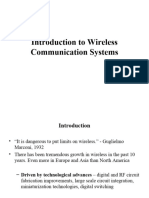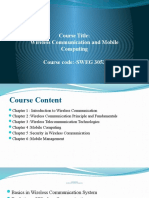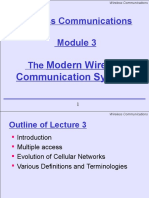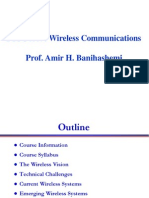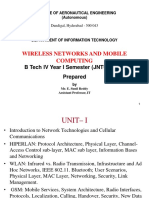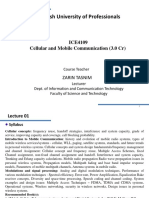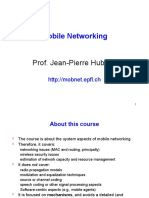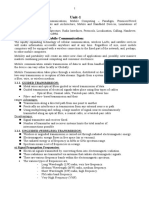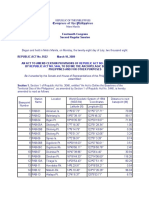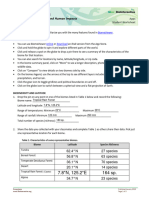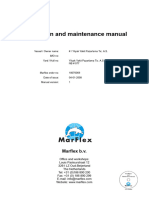0% found this document useful (0 votes)
21 views44 pagesWireless & Mobile Comm Course 2024
The document outlines the course 'Wireless and Mobile Communication Systems' offered at Aksum University, detailing its objectives, content, teaching methods, and assessment criteria. Key topics include principles of wireless communication, mobile radio channel modeling, types of multiple access schemes, and the evolution of mobile telephony systems. The course aims to equip students with a comprehensive understanding of wireless communication technologies and their applications.
Uploaded by
kirosseyfu16Copyright
© © All Rights Reserved
We take content rights seriously. If you suspect this is your content, claim it here.
Available Formats
Download as PDF, TXT or read online on Scribd
0% found this document useful (0 votes)
21 views44 pagesWireless & Mobile Comm Course 2024
The document outlines the course 'Wireless and Mobile Communication Systems' offered at Aksum University, detailing its objectives, content, teaching methods, and assessment criteria. Key topics include principles of wireless communication, mobile radio channel modeling, types of multiple access schemes, and the evolution of mobile telephony systems. The course aims to equip students with a comprehensive understanding of wireless communication technologies and their applications.
Uploaded by
kirosseyfu16Copyright
© © All Rights Reserved
We take content rights seriously. If you suspect this is your content, claim it here.
Available Formats
Download as PDF, TXT or read online on Scribd
/ 44





